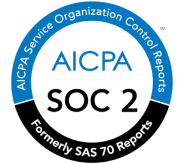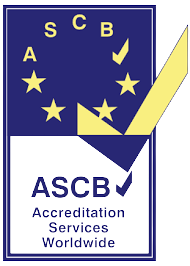Table of Content
- Introduction
- What are Employee Self-Service (ESS) Portals?
- What are the key features of ESS portals?
- Why should your organisation implement an ESS portal today in India?
- Can you list down common challenges in implementing an ESS portal?
- How will you choose the right employee self-service (ESS) for your firm?
- 1. Assess Your Business Needs
- 2. Evaluate User-Friendliness
- 3. Integration with Existing Systems
- 4. Consider Mobile Accessibility
- 5. Review Vendor Reputation and Support
- 6. Cost Considerations
- Conclusion
- FAQs on ESS
Introduction
Employee self-service (ESS) portals have emerged as the game-changers in the HR ecosystem. These portals help to streamline the daily work operations and make the staff more self-reliant.
HR leaders have more free time to work on their strategic approaches to becoming better business partners to the CEOs. They’re now eligible to automate their daily work themselves and bring more business impact while hiring, retaining and managing the workforce with smarts like never before.
So dive deep into this blog about the complete guide of ESS portals and know if you’re ready to implement the same in your organisation.
Want to skip the post?

What are Employee Self-Service (ESS) Portals?
These are centralised platforms for employees to manage their personal information update features and tasks. The employee self-service features empower them to check their pay slips, pay stubs, leave balances, and reimbursement requests and carry out daily admin tasks without HR’s help.
What are the key features of ESS portals?
Below are the key employee self-service features that define these portals and make them integral to modern workforce management:
- Self-Service Options
The hallmark of ESS software is the ability for employees to independently manage various aspects of their employment. This includes updating personal information, submitting leave requests, and accessing essential documents, fostering a sense of autonomy.
- Personalised Dashboards
ESS tools are designed with user-centricity in mind. Employees can tailor their dashboards to display information relevant to them, such as upcoming tasks, leave balances, and personalised announcements. This customization enhances the overall user experience.
- Payroll Management
One of the primary functionalities of ESS software India is providing employees with easy access to their payroll information. From viewing pay stubs to downloading tax documents, this feature ensures transparent and efficient payroll management.
- Leave and Absence Management
Streamlining leave requests and approvals is made seamless through ESS portals like uKnowva provides. Employees can submit requests, track their leave balances, and receive real-time or live updates on the status of their applications, promoting transparency in absence management.
- Training and Development Tracking
ESS often include features for employees to track their training and development progress. This may involve accessing training materials, completing online courses, and monitoring certifications, contributing to continuous professional growth.
- Performance Appraisal Tools
Facilitating performance appraisals becomes more efficient with ESS tools. Employees can access performance goals, submit self-assessments, and engage in ongoing feedback discussions, fostering a transparent and collaborative performance management process.
- Communication Hub
ESS serves as a central hub for communication within the organisation. From company-wide announcements to team-specific updates, employees can stay informed and engaged through the portal, reducing the reliance on scattered communication channels.
- Document Repository
Organising and accessing important documents is made easy with the document repository feature. Employees can securely retrieve company policies, HR forms, and other relevant documents, promoting compliance and accessibility.
- Employee Directory
Enhancing collaboration within an ESS often includes an employee directory. This feature enables employees to locate and connect with colleagues easily, fostering a sense of community within the organisation.
- Workflow Automation
Streamline workflows by automating repetitive processes. From onboarding procedures to performance reviews, automation reduces manual intervention, saving time and ensuring consistency in HR processes.
- Mobile Accessibility
In an era of remote work and flexible schedules, a reputed ESS is designed for mobile accessibility. Employees can conveniently access the portal from their smartphones, ensuring that vital HR functions are available anytime, anywhere.
- Integration with HR Systems
To ensure a cohesive HR ecosystem, ESS software India seamlessly integrates with existing HR systems. This integration allows for real-time data synchronisation and ensures consistency across various HR functions.
Also read: Top 13 Employee Self-Service Portals Benefits
Why should your organisation implement an ESS portal today in India?
Employee Self-Service (ESS) portals are a cornerstone in modern HR management in India, offering a plethora of benefits that transcend traditional administrative processes. Let's dive deeper into the manifold advantages that businesses can reap by embracing ESS portals:
- Streamlined Administrative Processes
ESS streamlines routine HR tasks, allowing employees to independently manage personal information, update contact details, and access critical documents. This automation not only reduces administrative burdens on HR personnel but also enhances overall operational efficiency.
- Enhanced Employee Empowerment
By providing employees with direct access to their information, ESS or employee self-service software empowers them to take control of their HR-related needs. This self-sufficiency leads to increased satisfaction and engagement, as employees can address queries and updates promptly.
- Real-time Access to Information
Gone are the days of waiting for HR responses. ESS enables real-time access to information, from pay stubs to leave balances. This immediacy fosters transparency and builds trust between employees and the HR department.
- 24/7 Accessibility
The beauty of ESS software India lies in their accessibility around the clock. Employees can log in at any time, from anywhere, making it convenient for remote or global teams. This flexibility caters to the diverse work environments prevalent in today's corporate landscape.
- Cost-Efficient HR Management
Automating HR processes through an ESS reduces the need for ongoing paperwork and manual data entry. This not only saves time but also cuts down on costs associated with traditional HR management, allowing businesses to allocate resources more strategically.
- Improved Accuracy in Data Management
With employees directly inputting and updating their information, the likelihood of errors decreases significantly. ESS portals contribute to maintaining accurate and up-to-date records, ensuring that HR decisions are based on reliable information.
Also read: How does ESS software save time?
Can you list down common challenges in implementing an ESS portal?
- Resistance to Change
Challenge: Employees may resist adopting new technologies, viewing them as disruptions to established routines.
Solution: Proactive communication is key. Engage employees early in the process, highlighting the benefits of ESS and providing training sessions to familiarise them with the new system.
- Data Security Concerns
Challenge: With the handling of sensitive employee information, concerns about data security/privacy may occur.
Solution: Implement robust security measures, including encryption, secure authentication, and regular audits. Communicate these measures to employees to instil confidence in the portal's security.
- Lack of Technical Proficiency
Challenge: Not all employees may be comfortable with digital tools, leading to potential usability issues.
Solution: Offer comprehensive training programmes to bridge the digital literacy gap. Provide ongoing support, including tutorials and FAQs, to assist employees in navigating the portal confidently.
How will you choose the right employee self-service (ESS) for your firm?
1. Assess Your Business Needs
Understand Your Requirements:
Start by identifying the specific HR processes and functionalities that are essential for your business. Consider aspects such as payroll management, leave tracking, performance appraisal tools, and document management.
Scalability:
Choose an ESS Portal that can scale with your business. Ensure that the portal can accommodate the growth of your workforce and adapt to evolving HR needs.
2. Evaluate User-Friendliness
Intuitive Design:
A user-friendly interface is crucial for successful adoption. Evaluate the portal's design and navigation to ensure that it is intuitive and easily accessible for employees with varying levels of technical proficiency.
Customisation Options:
Look for portals that offer customization options. This allows employees to tailor their experience, promoting engagement and ensuring that the portal aligns with your company's unique culture and processes.
3. Integration with Existing Systems
Seamless Integration:
Check the compatibility of the ESS Portal with your existing HR systems. A seamless integration ensures that data is synchronised in real-time, reducing the risk of data discrepancies and enhancing overall efficiency.
Interoperability:
Choose a portal that supports interoperability with common HR software and tools. This ensures a cohesive and interconnected HR ecosystem.
4. Consider Mobile Accessibility
Responsive Design:
Given the prevalence of remote work and the need for on-the-go access, opt for a portal with a responsive design. This ensures that employees can access the portal from various devices, including smartphones and tablets.
Mobile App Availability:
If applicable, check if the ESS Portal offers a dedicated mobile app. A mobile app provides added convenience and flexibility for employees who are not desk-bound.
5. Review Vendor Reputation and Support
Vendor Track Record:
Research the reputation of the ESS vendor like uKnowva. Look for customer reviews, testimonials, and case studies to gauge the vendor's track record in delivering reliable and effective solutions.
Support and Training:
Evaluate the support and training level provided by the vendor. A responsive support team and comprehensive training resources contribute to a smoother implementation and ongoing success.
6. Cost Considerations
Transparent Pricing:
Understand the pricing model of the ESS Portal. Look for transparency in pricing, and consider whether it aligns with your budget. Factor in not just initial implementation costs but also ongoing maintenance expenses.
Return on Investment (ROI):
Assess the potential ROI of the ESS Portal. Consider the long-term benefits in terms of time saved, increased efficiency, and improved employee satisfaction.
Conclusion
Adopting an Employee Self-Service (ESS) is not just a technological upgrade but a strategic investment in fostering a dynamic and empowered workplace. By prioritising clear communication, robust training, and continuous improvement, businesses can navigate challenges and optimise the full potential of ESS tools in India.
These platforms, like uKnowva, streamline HR processes, enhance employee engagement, and help you promote and reinvent the culture of self-service. Embracing mobile accessibility, aligning with compliance standards, and integrating feedback ensures a user-focused approach.
FAQs on ESS
Q: What is the primary purpose of an Employee Self-Service (ESS)?
A: An ESS is designed to empower employees by providing a centralised platform for managing various HR-related tasks independently. It includes features such as updating personal information, accessing payroll details, and submitting leave requests.
Q: How can ESS benefit HR departments?
A: ESS streamline HR processes, reducing administrative burdens. HR professionals can focus on strategic initiatives, talent development, and employee engagement, fostering a more impactful role within the organisation.
Q: Is the security of sensitive data ensured in ESS?
A: Yes, ESS prioritises data security. They implement encryption, secure authentication, and regular audits to safeguard sensitive employee information and ensure compliance with data protection regulations.
Q: Can ESS be accessed on mobile devices?
A: Absolutely. ESS tools are best suited for mobile accessibility, allowing employees to access the platform from smartphones and tablets. Some even offer dedicated mobile apps for added convenience.
Q: How can businesses ensure the successful adoption of ESS among employees?
A: Successful adoption involves clear communication, comprehensive training, and ongoing support. Encourage a self-service culture, highlight the benefits, and regularly update employees on new features to ensure a positive and engaged user experience.












